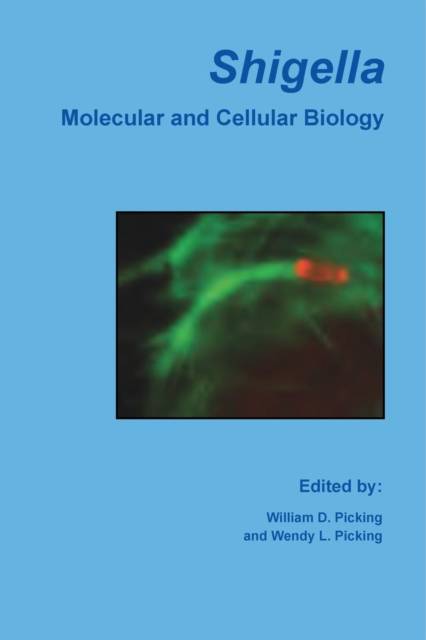
- Retrait gratuit dans votre magasin Club
- 7.000.000 titres dans notre catalogue
- Payer en toute sécurité
- Toujours un magasin près de chez vous
- Retrait gratuit dans votre magasin Club
- 7.000.0000 titres dans notre catalogue
- Payer en toute sécurité
- Toujours un magasin près de chez vous
Shigella
Molecular and Cellular Biology
Livre broché | Anglais
339,45 €
+ 678 points
Description
Members of the genus Shigella are responsible for bacillary dysentery and are of global public health importance. Shigella is one of the leading bacterial causes of diarrhoea worldwide with greatly elevated morbidity and mortality in developing nations and especially among children. This book provides a thorough overview of current research on the cellular and molecular biology of Shigella. Expert authors have contributed authoritative and up-to-date reviews of current knowledge and recent advances in the molecular biology of these pathogens. The first section of the book explores aspects of metabolism and gene regulation and examines the molecular and cellular biology of Shigella as a genus diversified from Escherichia. This section also considers often overlooked features of bacterial pathogens and the current understanding of RNA-based regulation of gene expression. The second part of the book focuses on the important area of host-pathogen interplay, the ability of Shigella to subvert host signaling processes, pathways for the destruction of phagocytes, the development of novel methods for assessing host cell targets, an overview of the adaptive immunity elicited by Shigella and current Shigella vaccine candidates. The final section covers the Shigella type III secretion system (T3SS) recognized as a highly evolved nanomachine for promoting cross-species communication between prokaryotes and eukaryotes. Two chapters are dedicated to dynamic aspects of the Shigella T3SS including the needle tip complex and novel methods for the identification of newly recognized effector proteins. This compendium provides the researcher with a flavour of the molecular and cellular topics that are important in understanding Shigella and the delicate balance it has with its primary host. This is an essential book for Shigella researchers and recommended reading for anyone working in the area of bacterial pathogenesis.
Spécifications
Parties prenantes
- Editeur:
Contenu
- Nombre de pages :
- 280
- Langue:
- Anglais
Caractéristiques
- EAN:
- 9781910190197
- Date de parution :
- 01-07-15
- Format:
- Livre broché
- Format numérique:
- Trade paperback (VS)
- Dimensions :
- 157 mm x 236 mm
- Poids :
- 521 g

Les avis
Nous publions uniquement les avis qui respectent les conditions requises. Consultez nos conditions pour les avis.





